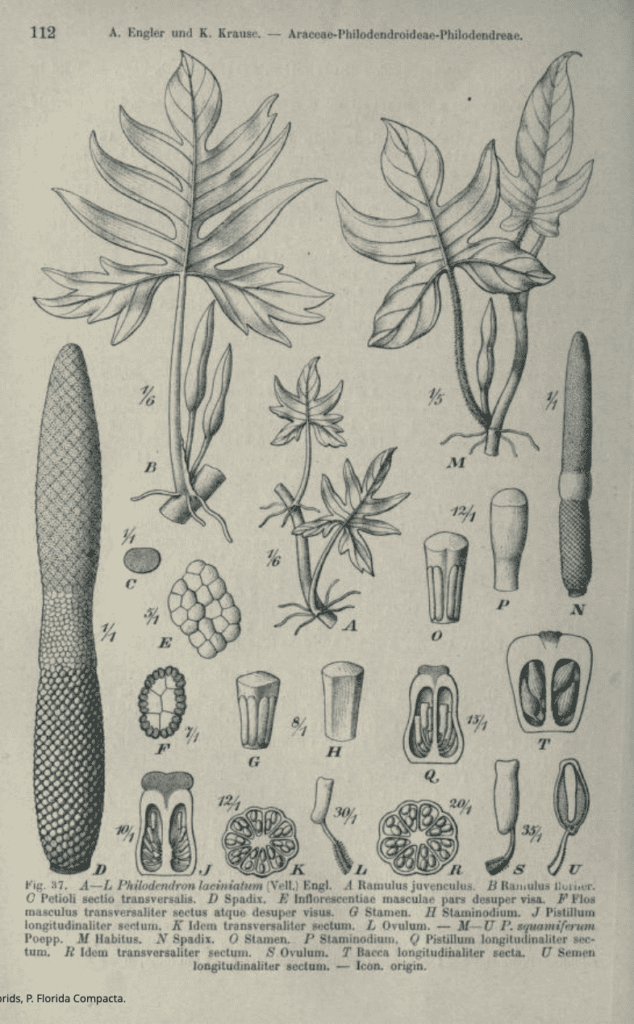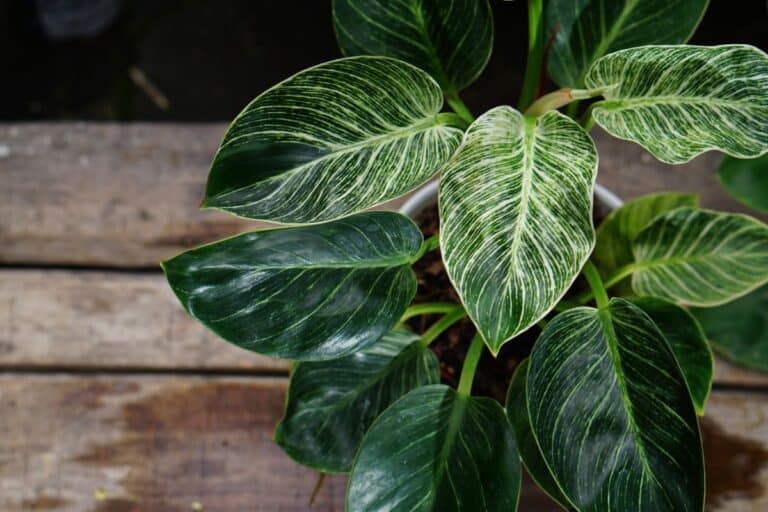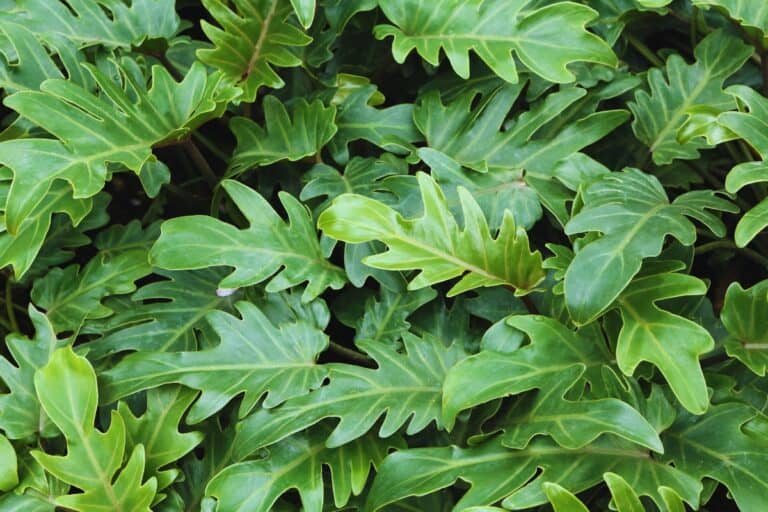Philodendron Florida: Origin, Types, Care
Have you ever come across the Philodendron Florida on the internet or at your local plant nursery? This plant has been around for decades, but have you ever wondered why it is called Florida when Philodendrons are typically native to Central and South America? In this article, we will delve into the history of the Philodendron Florida, explore its various varieties, and offer tips on how to care for this popular houseplant to keep it healthy and happy.
Philodendron Florida, Where Does It Come From?
The name is not misleading. Philodendron Florida is called so because it comes from Florida. Although its wild parents were brought from the South American rainforests, where Philodendrons thrive naturally, Philodendron Florida was actually born in the United States. This hybrid was created in 1951 at Bamboo Nurseries in Orlando by Robert McColley, who made hundreds of crosses. Some of these, like Philodendron Florida, reached great success.
Philodendron hybridization has been conducted with the objectives of producing plants that have increased beauty through new forms, leaf shapes and coloration and to produce plants which show resistance to some of the more common diseases and have improved keeping qualities in transit and in the home.
McColley R.H. and Miller H.N. (1965) Philodendron improvement through hybridization.

As per Bob McColley’s observations, there seemed to be two types of philodendrons – those that were beautiful, yet too delicate and prone to diseases, and those that were sturdy, yet rather plain-looking. Hybridization was his way of addressing both problems at once by improving both the looks and the resilience of the plant. With Philodendron Florida, he succeeded in creating a hybrid that had the best of both worlds.
The cross between Philodendron Squamiferum and Philodendron Pedatum (at that time known as Philodendron Laciniatum), which was baptised as Philodendron Florida, was the first cross that Bob McColley ever attempted. This cross proved to be a good choice, providing a solid foundation for much of his later work.
The Family History of Philodendron Florida
Both parents of Philodendron Florida share a close relationship, as they both belong to the Schizophyllum section of the Philodendron genus. This group of plants includes climbers with long internodes, 3-5 lobed leaves, and prominent inter-primary veins. Philodendron Pedatum is the most widely distributed species of this group, ranging from eastern South America to northwestern Colombia.
As Philodendron squamiferum was slow and would not stand winter shipment, and Philodendron laciniatum lacked colour, this looked like a good place to start.
McColley R.H. and Miller H.N. (1965) Philodendron improvement through hybridization.

The beautiful Philodendron Squamiferum with its three-day-beard petioles and bright green leaves was the Prince Charming in the story. Additionally, it produced flowers throughout the year, making it easier for McColley to obtain fresh pollen whenever needed. However, the plant had its shortcomings, being relatively slow-growing and not particularly hardy.
The leaves of Philodendron Squamiferum are indeed quite thin and described as parchment-like, but their glossy green color is truly gorgeous. The plant has robust stems that root in the fissures of tree bark and climb high. While Philodendron Florida did not inherit the magnificent reddish hairy petioles, it did get the glossy finish and crisp leaf venation.
Philodendron Pedatum was chosen for hybridisation because it was cold-hardy and could withstand temperatures to about 27 degrees F (-3 degrees C). So it made a great warrior princess kind of a mother for Philodendron Florida.
On the appearance side, Bob McColley noted that Philodendron Pedatum was “lacking colour,” which might cause some frowns among those plant owners who love their P. pedatum the way it is and find a lot of pleasure for the eyes in it. It should be noted that Bob McColley was talking about his specimen that he had in the nursery back in 1951. The specimens of Philodendron Pedatum that are available in the market today are not hybrids but cultivars, meaning they were carefully selected from among “pure-blood” descendants (propagations) of wild Philodendron Pedatum. Needless to say, only the most visually appealing would make it through many cycles of selection. So, these plants are also improved for commercial purposes, even though without any crossing involved.
A Side Note on Philodendron Compacta
A quick note is needed here about Philodendron Compacta, also one of the earlier hybrids created by McColley.
Its parents are Philodendron Squamiferum and Philodendron Quercifolium. McColley himself notes that he had two P. squamiferum plants in the nursery, one of which was growing more compact. So he used it for producing a more compact hybrid. As for the other parent, P. quercifolium, that McColley considered a different species, it was later recognised as a synonym of Philodendron Pedatum, just like P. laciniatum. So, at the end of the day, Philodendron Florida Compacta is the same hybrid as Philodendron Florida, but with slightly different initial specimen of the parent species. Later the compact growth habit was further accentuated through selection.
Philodendron Florida Varieties
Horticultural work on the new hybrid never ceased, and today we can see many grandchildren and great-grandchildren of McColley’s creation with new epithets added to their name, such as Green, Beauty, Ghost, and Mint.
All those beauties are variegated cultivars of Philodendron Florida:
- Philodendron Florida Beauty has irregular creamy-white variegation.
- Philodendron Florida Ghost brings this variegation to its maximum with some leaves displaying a pure white colour, or the lightest tint of mint green.
- In this last case it is sometimes labeled Philodendron Florida Ghost Mint, or just Philodendron Florida Mint.
- Philodendron Florida Green seems to be just the original Philodendron Florida and the word ‘Green’ is used to differentiate it from the variegated new-comers in the market.
A Side Note on Variegation
Variegation is a sought-after trait in ornamental plants, with over a third of commercial foliage plants valued for their variegated leaves. So, no wonder that those variegated varieties of Philodendron Florida are so popular.
We don’t know much about why plants have variegated leaves. Some scientists think that variegation helps protect plants from things like too much sun, cold weather, and harmful organisms like fungi and plant-eating animals. What we do know, however, is that that the growth conditions, particularly light intensity, have a major effect on the amount and type of variegation.
Studies have shown that while reducing light levels during production can increase variegation in some plants (like peperomia and dracaena), it will cause an opposite effect in the others (like codiaeum). When you bring variegated plants to your home, the changes in growth conditions can cause changes in variegation that can significantly reduce their aesthetic appeal.
Can your variegated Philodendron Florida revert? The answer is yes. One way to try to prevent it is to experiment with light levels. So if your Philodendron Florida Beauty or Ghost is only producing normal green leaves, while you are seeking that exquisite variegated look, try gradually moving it closer to the light source. Philodendrons, in general, don’t like full sun, so be sure to do it gradually. Wait for a couple of leaves to grow under the new conditions, and if the result is still suboptimal, increase the light intensity a little bit more.
Another way to test is feeding your plant with a higher-N fertilizer. The science behind it suggests that white leaves have a more intense N-metabolism and accumulate secondary N-compounds to remobilize them in case of nitrogen deficiency to support overall plant growth. So, if you give your plant more nitrogen, it will grow whiter leaves in order to handle the intake. However, in my opinion, it should not be the first method to try if you want to fix your variegated plant.
How To Take Care of Florida Philodendron?
Based on the family history and childhood memories of Philodendron Florida we can make some conclusions about the best care routine for these plants.
The wild ancestors of those Florida-born beauties have a lot in common. They enjoy high humidity of tropical rainforests, where they start their life in the ground and seek to find a host tree to climb closer to the light nicely filtered by the forest canopy. So, when introduced to our homes, these plants still appreciate high humidity, a surface to climb, a filtered light and a well draining substrate. In my experience, keeping them in LECA (growing them semi-hydroponically) has always proved effective.
Robert McColley intentionally mistreated his hybrid seedlings, subjecting them to a guerrilla boot camp by leaving them barefoot for a day or two, withholding and then overdosing fertilizers, keeping them dry and then very wet. Any sign of weakness resulted in immediate disposal of the young plant. However, those that could cope were certain to endure whatever conditions a seller or grower could provide.
As a result, Philodendron Florida is even easier to care for than its parents. It won’t react dramatically to a little neglect, except for the more delicate variegated varieties. It usually grows at a good pace and is not demanding. However, if you want your plant to reach its full potential, it’s important to observe the leaves. If the new leaves are getting smaller, you might want to improve the growth conditions to bring them closer to what the plant is genetically used to. For instance, you could let it climb instead of hanging, or adjust the light exposure.
As to the variegated Philodendron Florida, they require a little bit more attention, as their insatisfaction with the conditions you provide can manifest itself in reverting to the original all-green form, which is magnificent, but might be disappointing if you bought the plant exactly for those crazy spots or those neat white leaves. As noted above, you’ll have to make your own horticultural excersises to find the right spot in your house or adapt it (with grow lights, for example) to maintain those ephemeral leaf colour mutations.
SOURCES:
- McColley R.H. and Miller H.N. (1965). Philodendron improvement through hybridization. Proc. Fla. State Hort. Soc. 78: 409–415.
- Krause, K. (1913). Araceae – Philodendroideae – Philodendreae – Philodendrinae. In Das Pflanzenreich, Heft 60 (IV.23Db), ed. A. Engler.
- Li, Qiansheng & Chen, Jianjun & McConell, Dennis & Henny, Richard. (2007). A Simple and Effective Method for Quantifying Leaf Variegation.
- Sakuragui, Cassia. (2012). Two New Species and a Revised Key for Philodendron Section Schizophyllum (Araceae). Systematic Botany. 37. 43-47.



